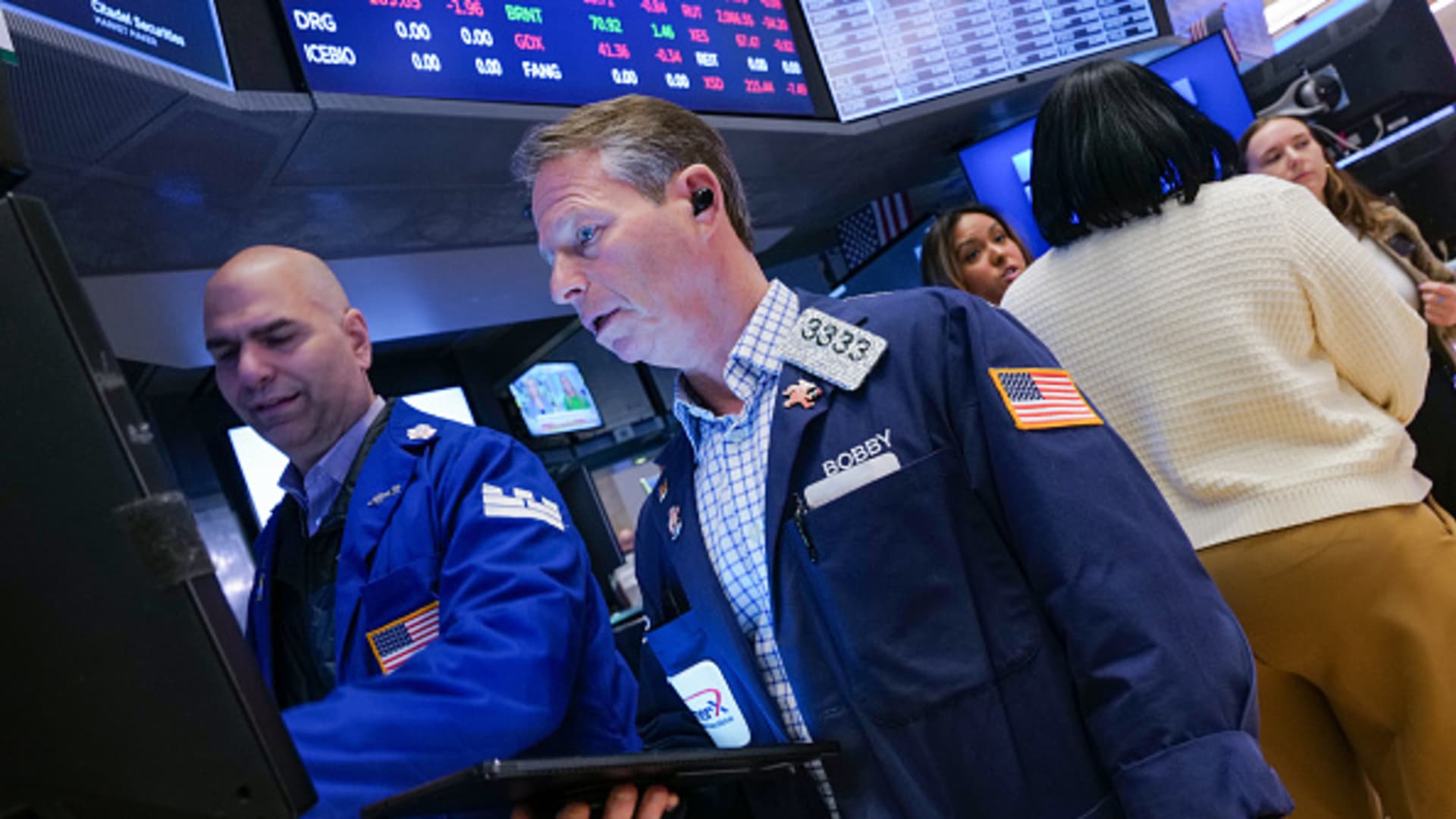Now Reading: Stock market today: Live updates
-
01
Stock market today: Live updates
Stock market today: Live updates

Traders work on the floor of the New York Stock Exchange at the opening bell on March 7, 2025.
Spencer Platt | Getty Images News | Getty Images
The S&P 500 gyrated on Friday, with the benchmark headed for its worst week in several months as the salvo of trade policy actions unnerved investors.
The broad index rose 0.4%, while the Nasdaq Composite gained 0.4%. The Dow Jones Industrial Average advanced 176 points, or 0.4%.
A weaker-than-expected jobs report released Friday raised further concerns about an economic softening and sent Treasury yields lower. Nonfarm payrolls increased by 151,000 jobs in February, less than the consensus forecast for 170,000 from economists polled by Dow Jones. The unemployment rate ticked higher to 4.1%.
That came as stocks have been on a roller-coaster ride this week with President Donald Trump’s tariff policies worrying investors about future U.S. growth and inflation. Trump said on Thursday that a swath of goods from Canada and Mexico that are covered by the North American trade agreement known as USMCA would be exempt from the announced duties until April 2.
This move effectively walked back much of the original plan for levies on the two countries, along with China. But the market has still sold-off this week, with uncertainty mounting amid constant updates and a lack of clarity around what to expect longer term.
“The market does not like uncertainty,” said Glen Smith, chief investment officer at GDS Wealth Management. “While we expect the market to find its footing and recover from the tariff-driven selloff, investors should brace for continued choppiness until these uncertainties clear.”
This market rout put the three major averages on course for their worst weeks this year. The Dow and S&P 500 have pulled back more than 2% and 3% this week, on pace to record their biggest weekly slides since September.
The Nasdaq Composite has dropped 4%, also on track to notch its worst week going back to September. The Nasdaq is officially in correction territory, which means the tech-heavy index closed 10% off its recent high.
Treasury Secretary Scott Bessent acknowledged to CNBC on Friday that the economy could be starting to “roll a bit.” However, Bessent said that was due to a transition from the policies of the previous administration. Bessent said any tariffs implemented would be a “one-time price adjustment” and not spark lasting inflation.
Financial and consumer discretionary stocks led the market down on Friday, with both S&P 500 sectors sliding more than 1%. Both are also slated to register their worst weekly performances in more than a year.



















